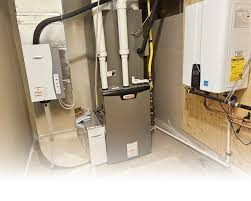Installing a new furnace is a major investment, especially in regions where a dependable heating system is essential for staying comfortable during colder months. The furnace you choose doesn’t just affect your home’s warmth—it also impacts energy efficiency and long-term utility costs. To make the right decision, it’s crucial to understand the installation process, research your options, and weigh key factors such as your home’s size, budget, and the energy efficiency ratings of different models. This guide will walk you through the essential steps, helping you prepare, avoid common mistakes, and select the furnace that best fits your home and lifestyle.
Assess Your Heating Needs
The first step in installing a furnace is evaluating your home’s heating requirements. Key factors to consider include the size of your home, the quality of insulation, the condition of your windows, and your family’s specific heating preferences. A professional assessment can provide valuable insights, helping to determine the ideal size and type of furnace to efficiently and effectively meet your needs.
Consider the Type of Furnace
Furnaces come in several types—gas, electric, and oil—each with its own pros and cons in terms of cost, efficiency, and compatibility with your home’s design and infrastructure. Gas furnaces are often the top choice due to their efficiency and affordability, but it’s important to carefully assess all your options to find the best fit for your needs.
Evaluate Energy Efficiency
When selecting a new furnace, energy efficiency should be a top priority. While higher efficiency ratings can significantly lower your monthly energy bills, they often come with a greater upfront investment. To maximize savings, consider furnaces with a high Annual Fuel Utilization Efficiency (AFUE) rating. An energy-efficient furnace not only cuts costs but also reduces your environmental impact, making it a smart and sustainable choice for your home.
Check for Rebates and Incentives
Before proceeding with a furnace installation in Sandy, check for available rebates and incentives. Many utility companies and governments offer rebates for installing energy-efficient appliances. These incentives can significantly reduce the initial cost and improve the return on your investment.
Select a Reliable Contractor
Selecting the right contractor for your furnace installation is a critical decision. Look for a professional who is licensed, insured, and backed by positive reviews or references. An experienced contractor ensures a high-quality installation, provides expert guidance during the selection process, and offers valuable tips for maintaining your new system.
Plan for Future Maintenance
Proper maintenance is essential to keep your new furnace running efficiently. Routine upkeep not only helps prevent expensive repairs but also extends the lifespan of your system. Before completing your installation, talk to your contractor about maintenance plans and warranties to ensure your furnace stays in peak condition for years to come.
Prepare Your Home
Getting your home ready for a new furnace installation is an essential final step. This process may include modifying your existing ductwork, clearing space for the new system, or upgrading your thermostat. Proper preparation ensures a smooth installation, minimizing potential delays or complications along the way.
Conclusion
Proper preparation before installing a furnace can save you time, money, and ensure your home is equipped with a heating system tailored to your needs. Assessing your heating requirements and preparing your space are vital steps toward creating a warm, comfortable living environment. With careful planning, the right equipment, and a skilled contractor, you can secure an efficient, reliable, and cost-effective heating solution that will keep your home cozy for years to come.
